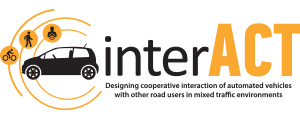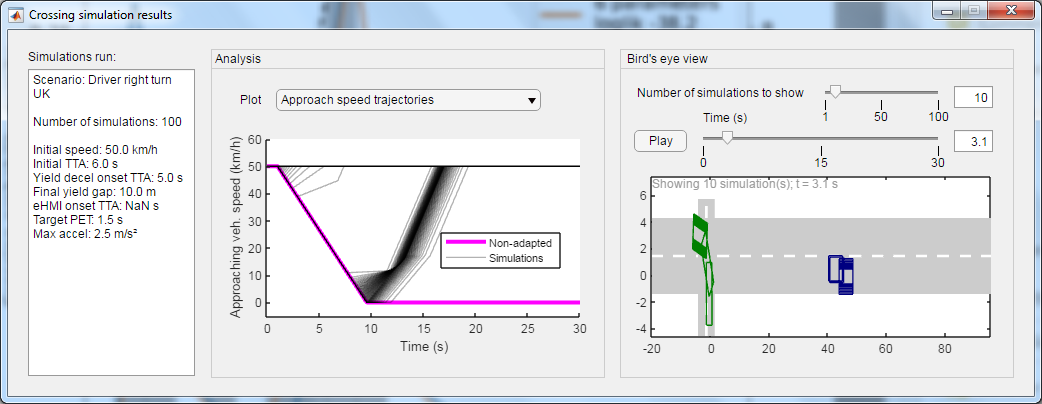Modelling and simulating human decision-making in road traffic interactions
One of the tasks in interACT WP2, led by University of Leeds, has been to complement the empirical studies of interactions in traffic, with development of mathematical models of interaction behaviour. This work has now concluded its first major iteration, producing parameterised models of road crossing decisions in two targeted scenarios: pedestrian crossing with an approaching car/automated vehicle (AV), and a human driver turning across the path of an approaching car/AV. Initial models (paper; non paywalled version) were developed based on knowledge from existing literature and then a dedicated set of experiments were carried out, in collaboration with Keio University in Japan, to obtain a cross-cultural data set. It was found that the same basic type of model could describe both the targeted interaction scenarios, and across both countries, but with different model tunings, e.g., the Japanese participants were generally more careful, initiating road crossing later than the UK participants (paper; D2.2). The developed models have been packaged as a freely available MATLAB software package (see screenshots below; download link), where interested researchers and developers can try out different traffic scenarios and different AV approach and yielding behaviours, to optimise AV behaviour, for example to minimise time lost for both for the human and the AV. The modelling and simulation work will continue in interACT WP6, to extend the scope of the models further, and apply them as part of the WP6 impact evaluation on traffic safety and efficiency of the interACT demonstrator vehicles.




